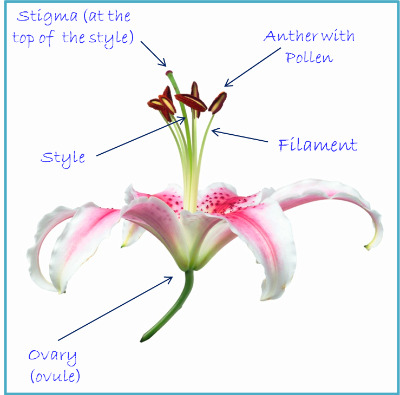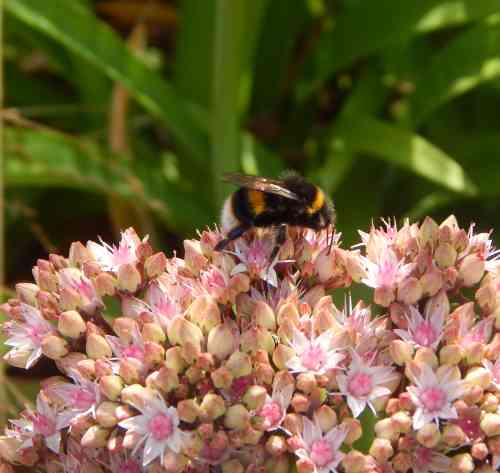Why Are bees Good Pollinators?
Here Are 6 Key Reasons
Updated: December 2023
What is it about bees that makes them so perfect for the job of pollinating flowers? The answer lies in a set of physical features and biological drives, including:
- their hairy legs and bodies easily collect pollen that is transferred from the male to female parts, thus enabling pollination to occur
- the variety and size and shape of bee bodies, meaning there's a bee suitable for most flower pollination tasks
- the fact that they have evolved methods to deal with flowers that do not easily release the pollen, for example by using techniques such as buzz pollination
- bees absolutely must visit flowers - because they need nectar and pollen
- different bee species emerge at different times of the year to suit varying flowering periods
- they provide their pollination services for free!
Why bees are perfect pollinators
Let's look at the points above in greater detail.
1. They have furry bodies and legs
 Pollen sticks to the hairs of the furry body of the bee.
Pollen sticks to the hairs of the furry body of the bee.This means that as the bee's body and legs brush against the anthers of the flower (the anthers are the male part of the flower, and bear the pollen), some of the pollen catches on to hair.
In turn, the bee then unwittingly transfers that pollen to the female part of the flower (called the stigma). In this way, pollen can also be transferred to the stigmas of different flowers.
In the photograph above, you can see a bumble bee inside a poppy flower. Each of the many white filaments around the center of the flower, are laden with pollen.

Below is a diagram of a lily flower with the anther and pollen, filament and stigma of the flower labelled.
Read more about the plant pollination process.

2. Size and shape
There are thousands of species of bee that attracted to different flowers, and are ideally adapted to enter into, and pollinate the many millions of different flower shapes, including very tiny bees that enter small, delicate flowers.
3. Buzz pollination
 Bumble bee shaking pollen from the anthers of a poppy.
Bumble bee shaking pollen from the anthers of a poppy.Some bee species can buzz pollinate. This is necessary when pollen is stuck firm to the anthers of the flower.
In such scenarios, a bee may grab the anthers, then move their flight muscles very rapidly to shake the pollen loose.
4. Bees must visit flowers!

The fact that bees need something from flowers (pollen and nectar - although some bees also collect oils) means that they absolutely have to visit them.
This ensures that where a bees is suited to pollinating a flower, they make reliable pollinators of that plant species.
5. There are different bees for different times of the year
Plants, trees and shrubs flower at different times, but that's okay, because some bee species emerge earlier or later than other species.
This means that there are bees available for a large part of the year, depending on the weather.
For example, in the UK, white-tailed bumble bees (Bombus lucorum) can emerge very early in spring, where as common carder bees emerge later, and can be available to pollinate autumn crops.
The honey bee below is foraging on winter heather.
 Honey bee foraging on winter heather.
Honey bee foraging on winter heather.
6. Bees pollinate for free!

Above is an image of humans hand pollinating pear trees in China. Why have they done this? Because pesticides have killed the local bee population, and beekeepers are reluctant to take their beehives to the pear groves for fear of poisoning.
This of course, can only add to the cost of producing food, because people who carry out the work that would have been done for free by the bees, will of course have to be paid.
In China, as I write, wages are low in comparison with Western countries, but just imagine if it was necessary to pay people in the USA, UK, Canada, Australia and so on, to do the job that bees had been doing for free, all along.
It's not only food crops we would need to be concerned about, but the wider eco-system - trees, shrubs, wildflowers, hedgerows that support huge amounts of wildlife. This is why we need to care about bees. Here are 10 things you can do to help.


